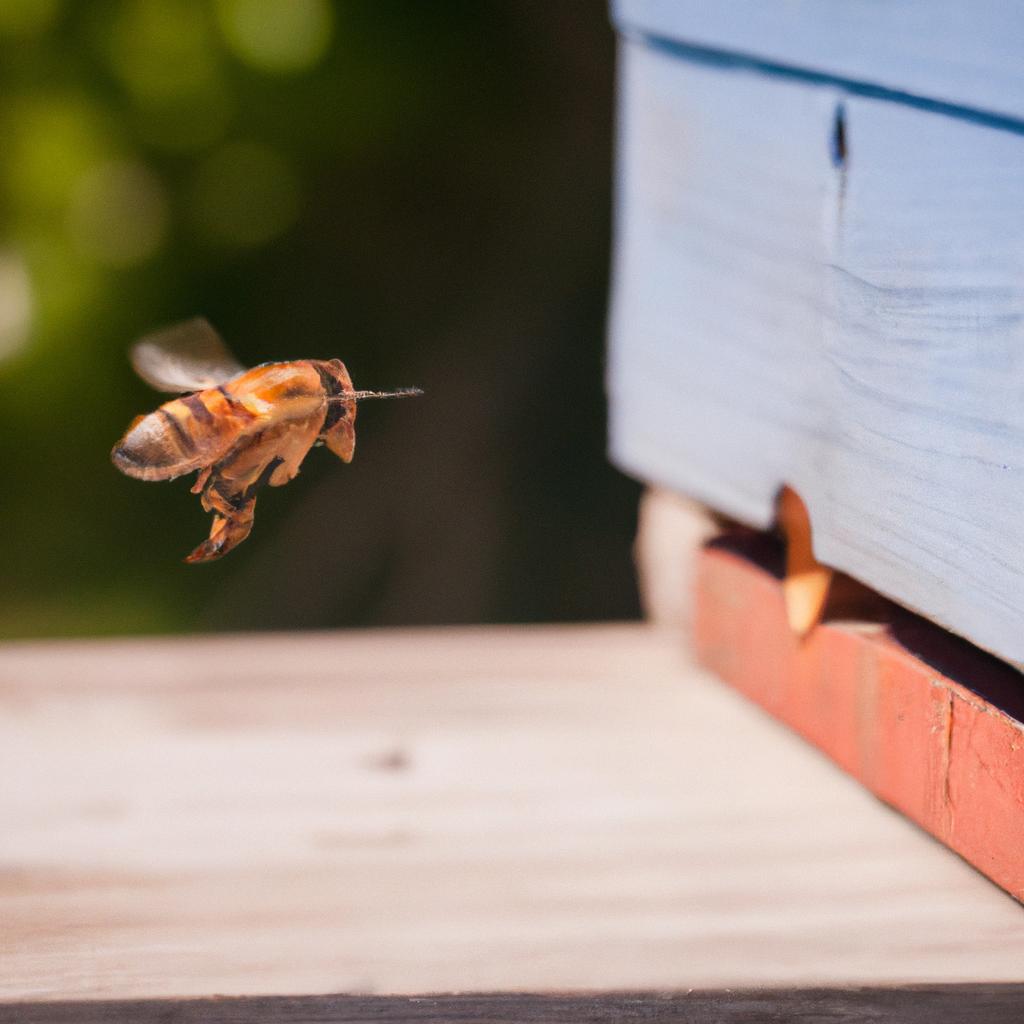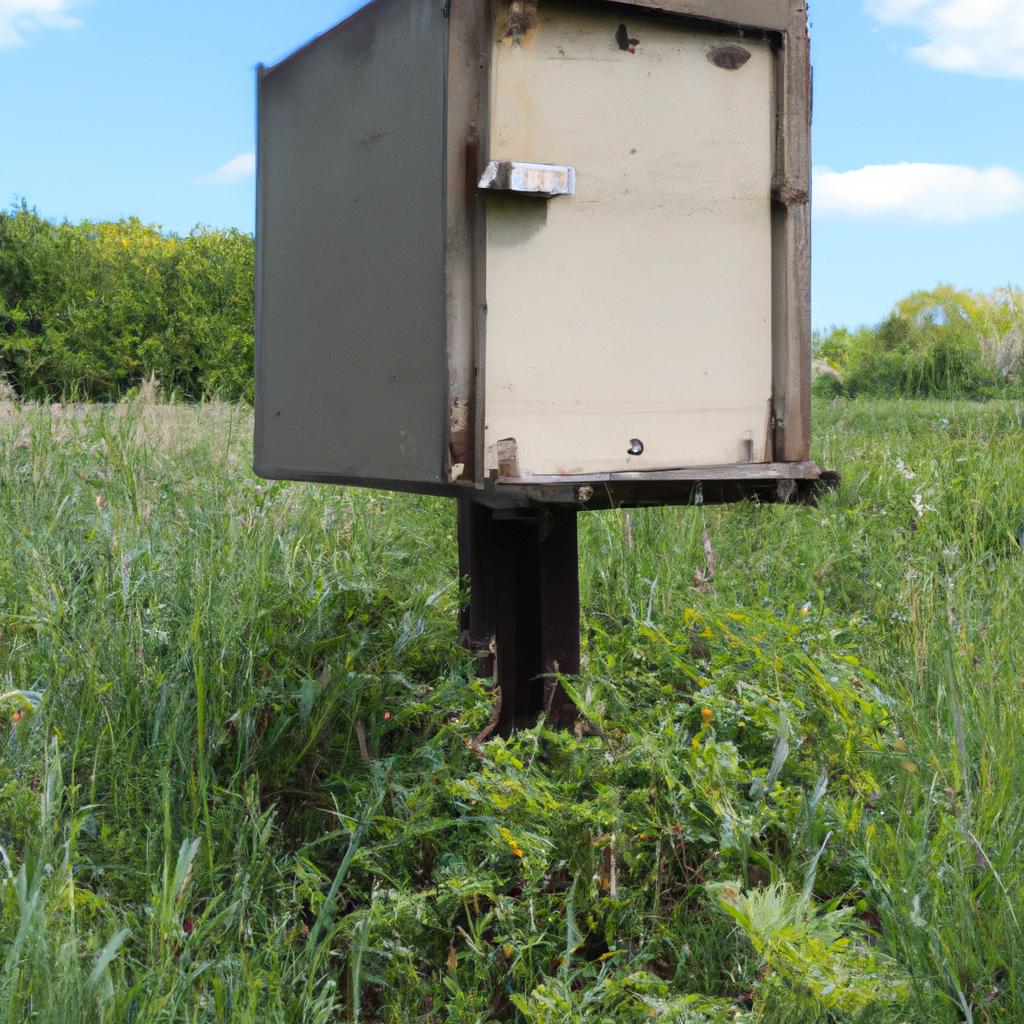Introduction

Honey bees are an essential part of our ecosystem. They play a crucial role in pollinating plants and crops, which helps in the production of fruits, vegetables, and nuts. However, many people don’t know much about the behavior and habits of honey bees. One common question asked by beekeepers and enthusiasts is, “how far do honey bees travel from the hive?” In this article, we will explore the different factors that affect honey bee foraging behavior and flight range to answer this question.
Honey Bee Foraging Behavior

Honey bees are social insects that live in colonies. In a colony, there are three types of bees: the queen, drones, and workers. The workers are responsible for foraging, which involves collecting nectar, pollen, and water from flowers and plants. Honey bee foraging behavior is influenced by several factors, including weather conditions, availability of resources, and the quality of the nectar and pollen.
Honey bees use their sense of smell to locate flowers that produce nectar and pollen. They also use their eyes to detect colors and patterns on flowers. Once they find a suitable source of nectar or pollen, they collect as much as they can and return to the hive to deposit it. The workers communicate the location of the food source to other workers using a dance language known as the waggle dance. This dance helps other bees find the food source and also provides information about the distance and direction of the food.
The waggle dance is an important part of honey bee foraging behavior and helps the bees to optimize their foraging efforts. By communicating the location of the food source to other bees, they can avoid wasting energy flying to areas where there is no food. The waggle dance also helps the bees to find new food sources and adapt to changes in their environment.
The Role of Honey Bee Dance Language
The honey bee dance language is a unique way of communication used by honey bees to share information about the location of food sources. The dance is performed by worker bees on the honeycomb, where they wiggle their bodies and produce a buzzing sound. The direction and duration of the dance convey the distance and quality of the food source.
The dance language plays a crucial role in honey bee foraging behavior. It helps the bees to optimize their foraging efforts by avoiding areas where there is no food and finding new sources of nectar and pollen. The dance also helps the bees to adapt to changes in their environment, such as the availability of food sources and the weather conditions.
The waggle dance is not only used to communicate the location of food sources but also to mark the location of the hive. When bees return to the hive after foraging, they perform a dance that indicates the location of the hive to other bees. This helps the bees to navigate back to the hive and avoid getting lost.
Honey Bee Flight Range
Honey bees are capable of flying long distances in search of food. On average, honey bees can fly up to 3 miles from the hive to find food sources. However, some bees have been known to fly up to 6 miles or more in search of food.
The flight range of honey bees is influenced by several factors, including weather conditions, availability of food sources, and the health of the colony. Bees are more likely to forage on warm, sunny days when there is less wind and rain. They are also more likely to forage in areas where there are plenty of flowers and plants that produce nectar and pollen.
The health of the colony also plays a role in the flight range of honey bees. A healthy colony with a large population of workers is more likely to forage over a larger area than a weak or sick colony. In addition, the availability of resources within the hive, such as honey and pollen, can also affect the flight range of honey bees. Bees that have access to plenty of food within the hive are less likely to forage long distances in search of food.
How Far Do Honey Bees Travel from the Hive?
Honey bees can travel up to five miles from their hive in search of food. However, the distance that they travel depends on several factors, including the availability and quality of food sources, weather conditions, and the strength of the colony.
In general, honey bees tend to forage closer to their hives when food sources are abundant. They may travel further when resources are scarce or when they need to find new food sources. The strength of the colony also plays a role in how far honey bees travel. Strong colonies with many worker bees can cover more ground than weaker colonies with fewer workers.
Weather conditions can also affect how far honey bees travel. Bees are less likely to forage in cold, rainy, or windy weather. They may stay closer to the hive during these conditions to conserve energy and protect themselves from the elements.
Conclusion
In conclusion, honey bees are incredible insects that play a vital role in our ecosystem. Understanding their behavior and habits is essential for beekeepers and enthusiasts alike. In this article, we explored how honey bee foraging behavior and flight range are influenced by various factors. We also answered the question, “how far do honey bees travel from the hive?” by discussing the distance that they can cover and the factors that affect their travel. As we continue to learn more about honey bees, we can better protect and support these important pollinators.
